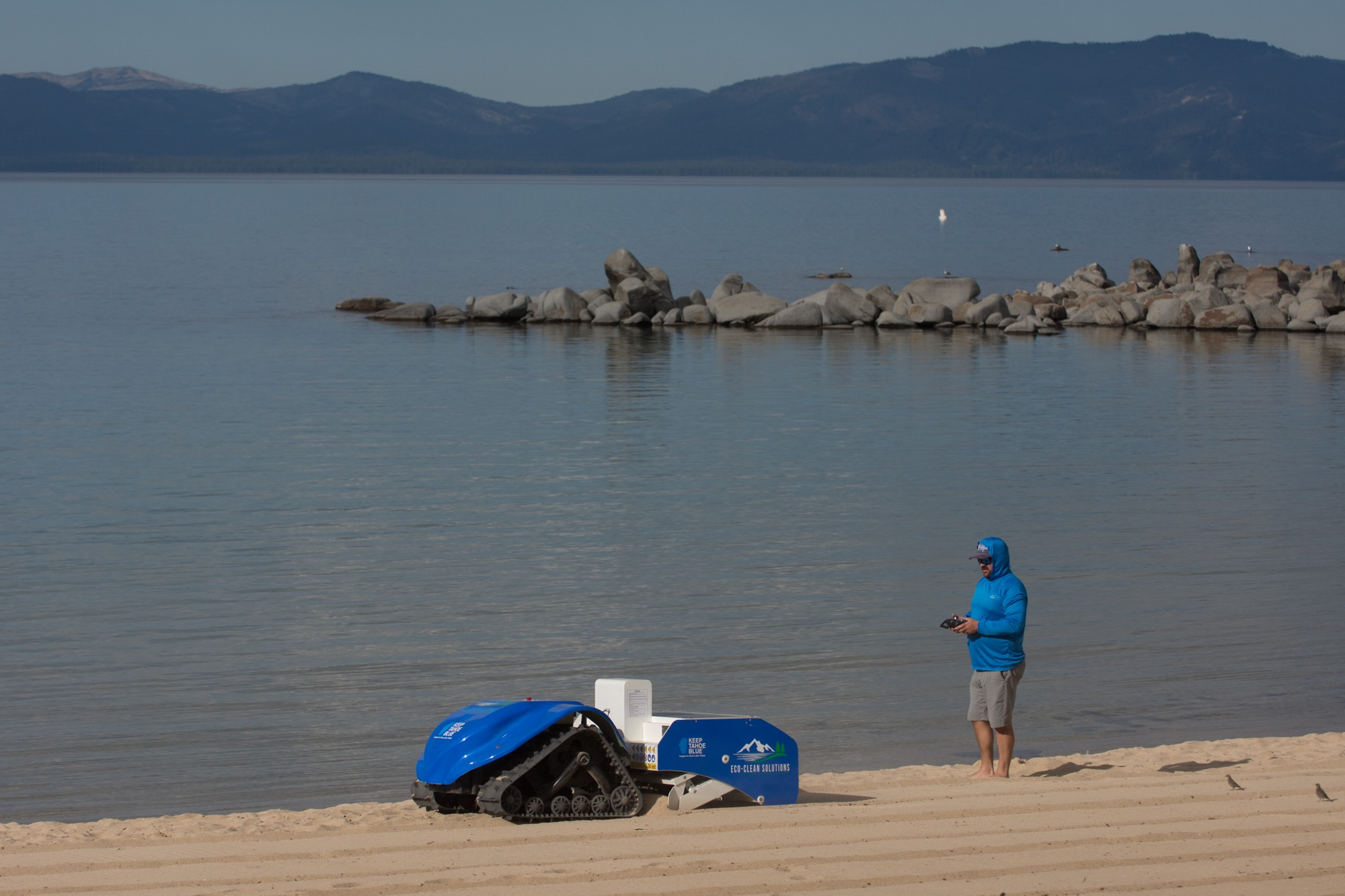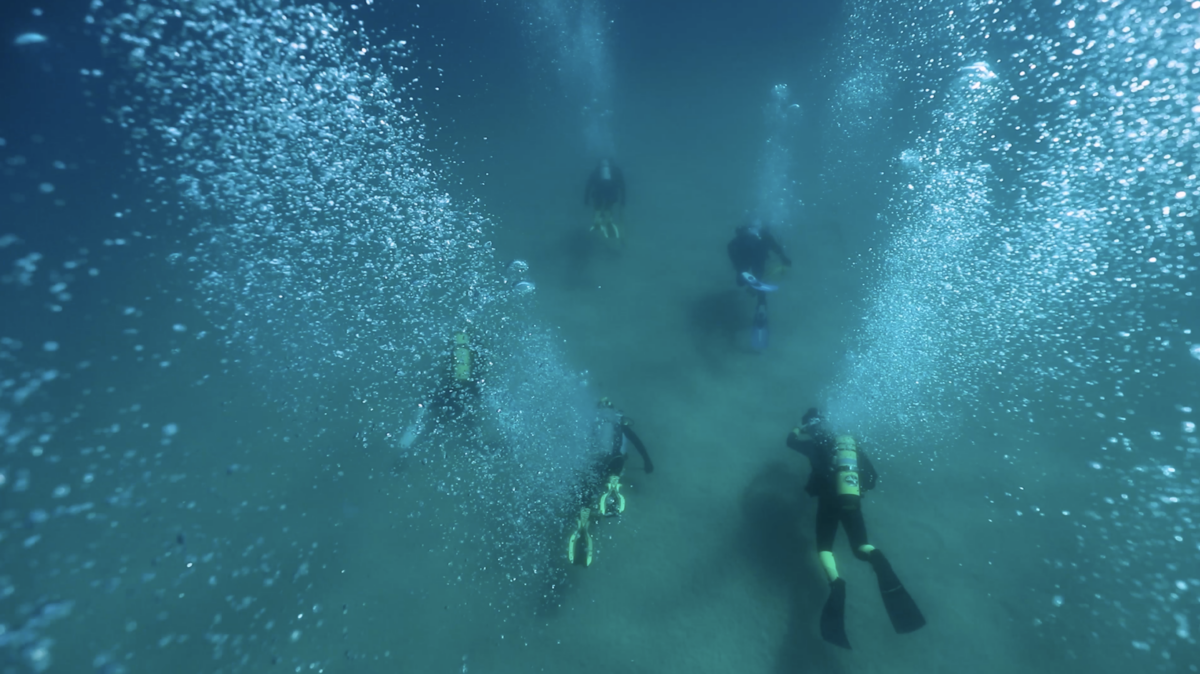Indy Environment: Can robots keep Tahoe’s beaches and water clean?

Good morning, and welcome to the Indy Environment newsletter. I'm Amy Alonzo, the environment reporter for The Indy.
Labor Day is drawing near, signaling the end of summer and the closing of Lake Tahoe’s beach season.
But for some Tahoe environmental groups and agencies dedicated to preserving the basin and watershed, beach season is year-round.
Tahoe garnered national attention over the Fourth of July weekend when thousands of visitors left mountains of trash on its beaches — not the best way to treat the iconic lake. Beyond the trash, the lake is battlinges clarity issues from natural and human-caused pollutants and aquatic invasive species.
I reached out to some of the people behind efforts to "Keep Tahoe Blue" — and its beaches pristine. I learned a lot and I hope you do, too.
As always, we want to hear from readers. Let us know what you’re seeing on the ground and how policies are affecting you. Email tips to me at [email protected].
To get this newsletter in your inbox, subscribe here.
When the July Fourth crowds cleared out from Tahoe’s beaches this year, visitors left thousands of pounds of trash behind — Zephyr Shoals alone had 6,300 pounds of rubbish. The next day, volunteers flocked to the beaches, picking up broken coolers and lawn chairs, plastic cups and aluminum cans.
But more rubbish, unseen by the volunteers, hid just beneath the sand. Across Tahoe’s beaches, scraps like bottle caps, bits of Styrofoam and cigarette butts remained.
“I like to believe most trash is accidental, but seeing that beach that morning, it was all intentional,” said nonprofit Clean Up The Lake founder and CEO Colin West. “It was almost like it was a music festival and like they expected someone to come and pick up after them. It was hard to see.”
Roughly 15 million people visit Lake Tahoe annually. As the lake’s popularity continues to grow, so does the stress on the basin’s environment. Traditional methods for rounding up litter in the water and on the lakeshores are no longer sufficient, according to the League to Save Lake Tahoe, a nonprofit group dedicated to protecting the Tahoe Basin.
Enter the BEBOT and the PixieDrone, zero-emission robots designed specifically to clean sandy beaches and the surfaces of lakes.
Last year, the League to Save Lake Tahoe partnered with ECO-CLEAN Solutions, a company that touts itself as providing “eco-friendly, noninvasive cleaning technologies for beach, coastal and marina environments,” to pilot the BEBOT, an electric and solar-powered sand-sifter to remove difficult-to-detect, hard-to-remove trash.
In the pilot project, Tahoe’s first beach-cleaning robot cleaned 72,000 square feet of beach, collecting 4,500 pieces of litter. The blue robot — about the size of a golf cart and emblazoned with the slogan “Keep Tahoe Blue” — can sift through 32,000 square feet of sand per hour.
The robot is the last line of defense against beach litter, according to Jesse Patterson, chief strategy officer for the League to Save Lake Tahoe.
Plastic trash not removed from the beaches breaks down over time into smaller pieces, eventually becoming microplastics, which are nearly impossible to remove from the lake.
A global study released in July found that of 38 freshwater lakes studied across six continents, Tahoe has the third-highest level of microplastics. Scientists attribute the high levels to humans.
The League and ECO-CLEAN have also introduced PixieDrone, an aquatic robot that glides across the surface of the lake, removing debris and aquatic weeds. It is the first technology of its kind used on the West Coast.
The electric, autonomous motorized skimmer moves through the water, capturing debris inside its open “mouth.” It can adjust its course in real time, avoiding docks, pilings and boat slips as it navigates a pre-mapped route.
The PixieDrone is being tested at the Tahoe Keys Marina, which suffers from an aquatic invasive plant infestation. When boats leave the marina they can carry plant fragments into the lake, potentially starting new infestations.
In 2022, the Tahoe Regional Planning Agency Board unanimously approved the one-time application of herbicides in the Keys to treat the aquatic invasive species. It marked the first use of herbicides in the lake’s history.
The Tahoe Keys are a man-made lagoon with about 1,500 houses surrounded by shallow, stagnant water. The aquatic invasive species problem at the Keys is about 30 times larger than any other infestation in the lake.
The PixieDrone gathers the harmful weeds to slow their spread. It can also clean gas spills and assess water quality.
The city of South Lake Tahoe and the League to Save Lake Tahoe have thus far funded the BEBOT and Pixie Drone. The projects are slated to receive additional funding through the Lake Tahoe Restoration Act, which directs millions of dollars in federal funding to the lake for environmental protection and habitat restoration.

Other challenges at Tahoe — and solutions
Tahoe’s pollution woes extend beyond its beaches. Lake clarity and underwater pollution also plague Big Blue.
The lake’s clarity has declined drastically during the past few decades; in 1968, its clarity — how far down scientists can measure a circular white disk into the lake and still see it — measured over 102 feet. Last year, the lake’s clarity measured 72 feet; in 2021 it measured 61 feet. People took notice.
In the early 1970s, utilities started pumping wastewater out of the Tahoe watershed, reducing algae growth. But that didn’t solve the problem of fine sediment entering the lake, which causes up to two-thirds of the lake’s loss in clarity.
In 2011, the Lake Tahoe Total Maximum Daily Load (TMDL) Program was launched to restore the lake’s clarity to at least 78 feet by 2031. The TMDL program focuses on reducing pollutants that find their way into the lake.
Measures taken in 2022 included sweeping 7,800 miles of streets to reduce runoff and stabilizing dozer lines and fuel breaks from the 2021 Caldor Fire, according to an annual report issued earlier this month by the Nevada Department of Environmental Protection (NDEP) and the Lahontan Regional Water Quality Control Board (part of the California Environmental Protection Agency.)
“The progress made toward restoring Lake Tahoe clarity has been and continues to be encouraging,” NDEP Administrator Jennifer Carr said in a statement.
Below the lake’s surface, Clean Up The Lake — a nonprofit that in 2022 completed a human-powered 72-mile underwater cleanup of Lake Tahoe’s shoreline — just opened an Environmental Dive Center, a hybrid between a conservation dive school and an environmental science center in Incline Village. At the center, aspiring divers will learn about aquatic invasive species survey techniques and submerged litter cleanup methods in addition to traditional diving skills.
The group is also in the permitting process for removing nearly 700 heavy-lift objects, such as sections of old boats, identified during the 72-mile cleanup of the lake.
Restoring the Lake Depths Foundation, another underwater clean up group, uses remotely operated vehicles to clean trash up to 100 feet below the surface of the lake.
The efforts to increase clarity, clean beneath Tahoe’s surface and the addition of the robots are steps toward “sustainability and stewardship in the face of climate crisis,” the theme of the 27th annual Lake Tahoe Summit held earlier this month.
The summit drew California and Nevada leaders including Sen. Jacky Rosen (D-NV), Gov. Joe Lombardo, Sen. Catherine Cortez Masto (D-NV), and Sen. Alex Padilla (D-CA), who lauded efforts to preserve and protect the lake.
“Lake Tahoe is a critical part of our region’s environment and our state’s economic success … it’s critical that we keep working to protect this natural wonder now more than ever,” said Sen. Jacky Rosen (D-NV).
Earlier this year, Rosen, Cortez Masto, Padilla and Sen. Dianne Feinstein (D-CA) introduced the latest version of the Lake Tahoe Restoration Reauthorization Act.
The legislation allocates $415 million through 2034 to reduce the threat of wildfire, improve water clarity, combat invasive species and restore the Tahoe Basin.
Nevada Reps. Mark Amodei (R-NV), Susie Lee (D-NV), Dina Titus (D-NV) and Steven Horsford (D-NV) and California Rep. John Garamendi (D-CA) introduced companion legislation in the House.
And, as Congress returns to session to debate funding measures such as the Lake Tahoe Restoration Act reauthorization, the BEBOT and PixieDrone will keep plugging along, removing one piece of garbage and aquatic invasive weed at a time.
This story has been updated at 11:15 a.m. on Aug. 28, 2023, to correct the amount of trash collected at Zephyr Shoals. In addition, the BEBOT removed 4,500 pieces of litter from a combined 11 locations during its pilot testing in 2022. The robot cleaned the Tahoe Beach Club this year.

Here’s what else I’m watching this week:
The Inflation Reduction Act just celebrated its one-year anniversary. Grist looks at the environmental accomplishments of the act thus far, and what’s to come.
An excellent two-part explainer from my coworker Gabby Birenbaum about the history of public lands bills in Nevada, the 25th anniversary of the Southern Nevada Public Lands Management Act and their effects on growth and conservation in the state.
Noah Glick at the Sierra Nevada Ally takes Gov. Joe Lombardo to task on his climate strategy — or lack of one, as Glick writes.
In many Western states, gunshots outnumber electrocution as a cause of death for birds. Read more in High Country News.
The Nevada Current looks at the farm bill, why it matters and how it affects everyday people.
